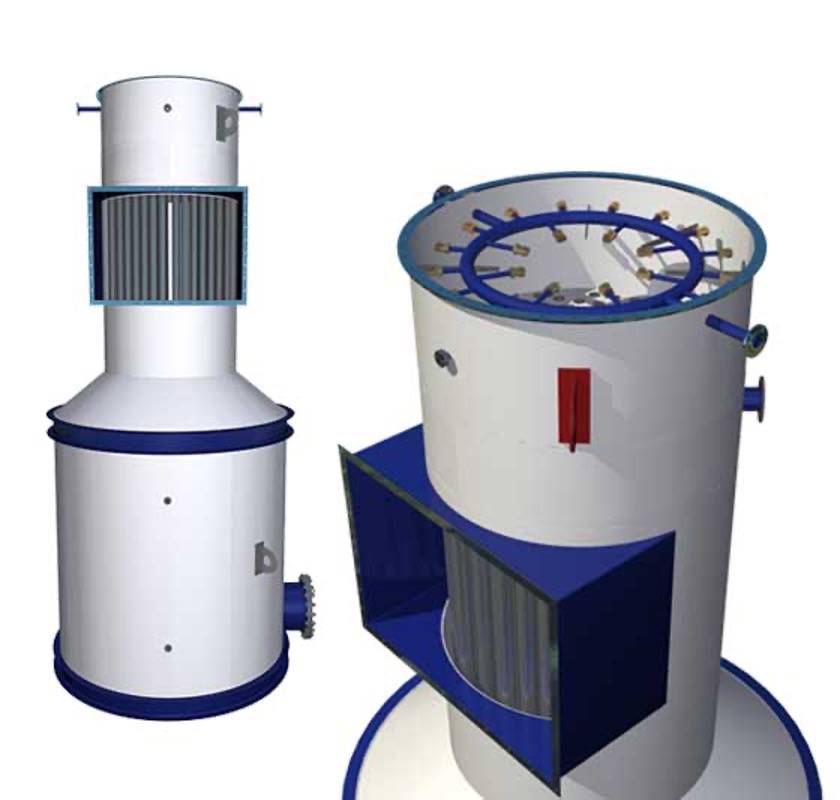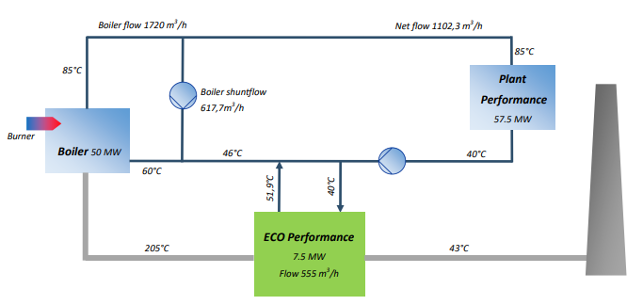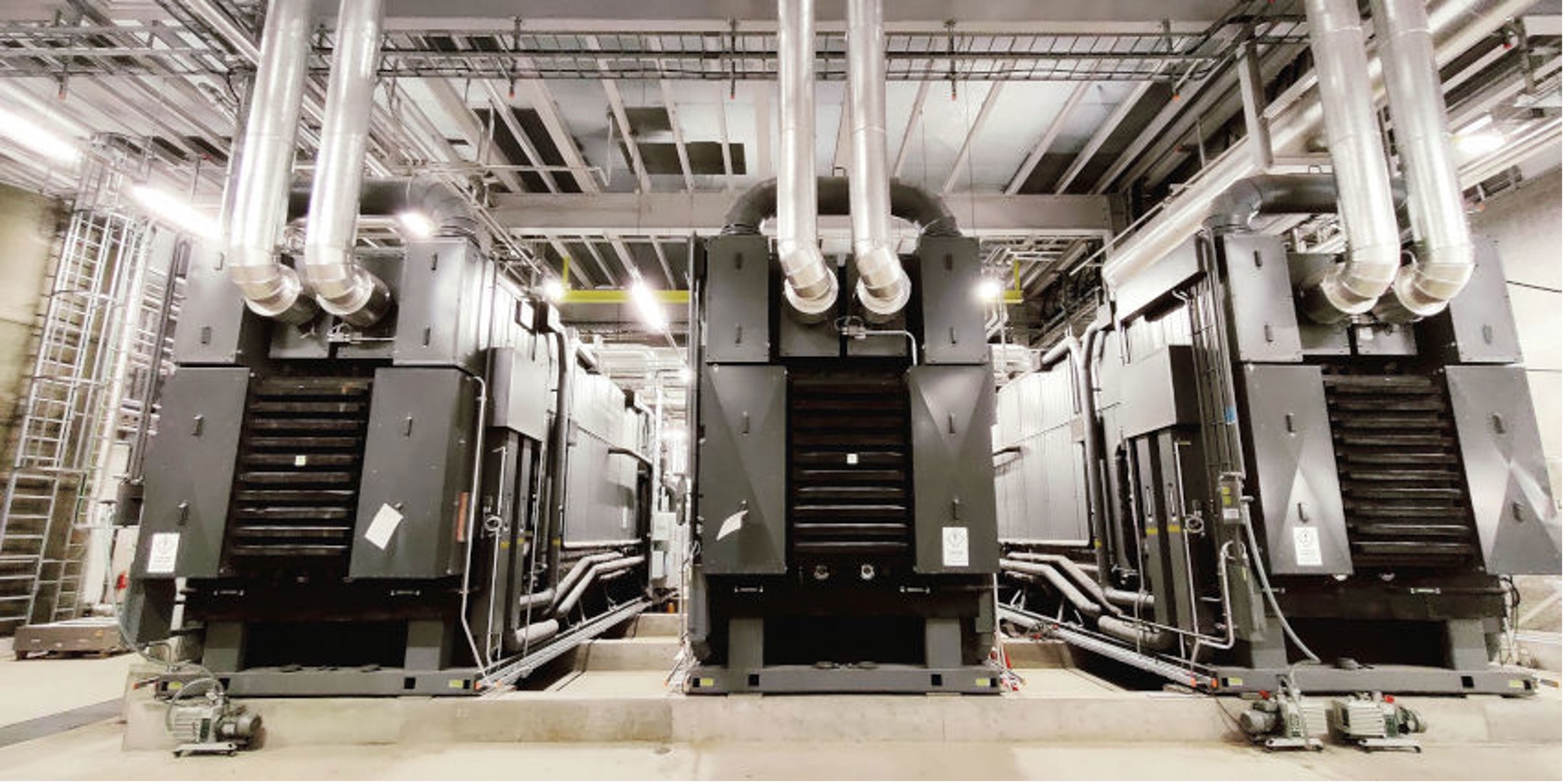We continue the series of publications devoted to the topic of the use of waste heat energy, condensation utilizers and increasing the efficiency of the fuel energy use. Also we share the successful experience of implemented projects. You can read previous articles by the following links:
- Utilization of waste heat in plants using wet biomass as fuel;
- Condensation economizers use at biofuel boilers.
The use of condensing units, despite their obvious advantage in terms of energy efficiency and the potential benefit of reducing pollutant emissions, is still not widespread.
One of the reasons is related to corrosion problems due to the condensation of acidic compounds. These problems lead to high financial costs for the manufacture and installation of condensing heat exchangers, compared to conventional heat exchangers. For long-term and safe operation, corrosion-resistant steel, special fittings, devices and equipment for waste disposal, pipelines, gas pipelines are used. Usually, the use of existing brick or steel chimneys is also complicated precisely because of accelerated destruction and corrosion. In order to protect smoke pipes, anti-corrosion coatings, heating of flue gases, bypassing and mixing of flue gases from various installations can be used to maintain the temperature above the dew point. Such measures are not always effective, and therefore it is recommended to install individual flues made of corrosion-resistant steel on installations using deep-cooling heat exchangers.
During the burning of 1,000 m3 of gas, about 1.6 m3 of water vapor condensate is formed. When burning wet biomass, the amount of water vapor in the flue gases is proportional to the moisture content of the biomass. Thus, during the operation of a boiler with a condensing economizer with a capacity of 10 MW and an efficiency of 98% and burning biofuel with a humidity of 35%, more than 1 m3/h of condensate is formed, and at a humidity of 50% – more than 2 t/h.
The formed acidic condensate (pH=4-5) needs to be neutralized before draining into the sewer or for the purpose of further beneficial use (fueling of heating networks). Neutralization with chemical reagents is the main method of condensate treatment and the cost of chemical reagents can be about 1 euro/Gcal.
In order to improve the heat exchange in disposal plants, active cooling systems are used by spraying condensate in the flow of flue gases. This solution allows you to increase the active area of heat exchange and increase heat transfer. Finely dispersed particles of sprayed condensate intensively cool flue gases and contribute to the precipitation of condensate on cold heat exchange surfaces. Together with the condensate, solid particles of ash stick to the heating surfaces, thus cleaning the flue gases. Flowing down the vertical walls, the condensate simultaneously cleans the heating surfaces and collects in the lower part of the disposer. Excess condensate is removed from the recycler to the neutralization system, where, in particular, it is cleaned of solid particles.
Another reason for the slow rate of adoption of condensing heat exchangers is that in order for water vapor to condense, the temperature in the heat exchanger must be kept below the dew point temperature. A decrease in this temperature is caused by the use of solid fuel with a high sulfur content (coal) and an increase in excess air, which should be avoided.
The possibility of organizing the effective utilization of latent heat depends on the temperature of the flue gases, the connection scheme and the temperature of the return network water for cooling. Usually, the increase in the temperature of the return water in the network occurs during the heating period, when the temperature of the outside air begins to decrease. In this case, the efficiency of the condensing heat exchanger decreases, and active condensation can begin to occur outside the heat exchanger on colder surfaces – in gas ducts and chimneys. For such a case, it is absolutely necessary to provide for the possibility of draining condensate and access for cleaning the heating surfaces. In order to avoid undesirable operating modes, it is reasonable to introduce regulation of heat utilization power by bypassing flue gases and regulating the flow of cooling water.

The main organizational and technical directions for increasing the efficiency of the work of the recyclers are:
- transition to low-temperature heating systems and qualitative and quantitative regulation of the heating network,
- humidification of ducted air,
- use of active cooling systems,
- additional cooling of water in front of the disposer.
Compression or absorption heat pumps can be used for such purposes.
Practical case study
Finnish energy technology supplier Valmet Oyj has announced the supply of a flue gas condensing unit for Helen’s Vuosaari bio-thermal power plant in Helsinki, Finland.
The technological solution combines flue gas condensation and combustion air humidification with heat pump technology. High heat recovery is achieved with the help of absorption heat pumps for water cooling, which allows to increase the overall efficiency of the installation by more than 120% and reduce the temperature in the chimney to 11°C. Heat recovery increases additional heat production by 69 MW, which is more than 30% of fuel consumption. The condensate is treated and used as raw water in the boiler room and as boiler feed water after demineralization.
